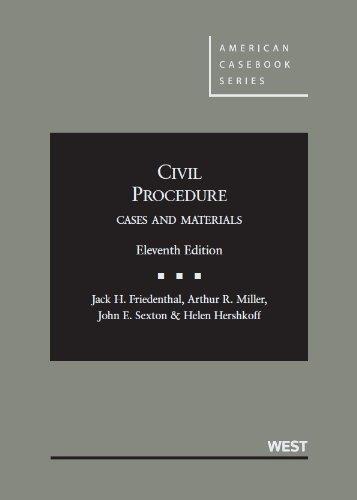4. Four years after York, the Supreme Court, all on the same day, decided a trio of...
Question:
4. Four years after York, the Supreme Court, all on the same day, decided a trio of cases involving the Eriedoctrine:
RAGAN v. MERCHANTS TRANSFER & WAREHOUSE CO., 337 U.S. 530, 69 S.Ct.
1233, 93 L.Ed. 1520 (1949), grew out of a highway accident that occurred on October 1, 1943.
On September 4, 1945, Ragan filed a diversity action in a federal court in Kansas. However, service was not made on the defendant until December 28. Kansas had a two-year statute of limitations on tort claims. Ragan claimed that according to Rule 3 of the Federal Rules, the suit was commenced (and hence the statute tolled) by the filing of the complaint. The defendant countered that Kansas law dictated that service had to have been made within the two-year period. The Supreme Court held that state law would determine in diversity when the statute was tolled. Justice Douglas explained:
[T]here can be no doubt that the suit was properly commenced in the federal court. But in the present case we look to local law to find the cause of action on which suit is brought.
Since that cause of action is crated by local law, the measure of it is to be found only in local law. It carries the same burden and is subject to the same defense in the federal court as in the state court. * * * It accrues and comes to an end when local law so declares.
* * * Where local law qualifies or abridges it, the federal court must follow suit. Otherwise there is a different measure of the cause of action in one court than in the other, and the principle of Erie R. Co. v. Tompkins is transgressed.
Step by Step Answer:

Civil Procedure Cases And Materials
ISBN: 9780314280169
11th Edition
Authors: Jack Friedenthal, Arthur Miller, John Sexton, Helen Hershkoff






